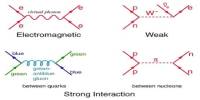The reduction of sound energy as it propagates through a medium is referred to as acoustic attenuation. Sound wave attenuation can occur due to a variety of mechanisms such as absorption, scattering, and reflection. When sound waves interact with the medium through which they are passing, they are converted into other forms of energy, such as heat. This can happen when sound waves interact with materials that absorb sound energy, such as foam, carpet, or curtains.
Acoustic attenuation is a measurement of the energy loss caused by sound propagation through media. Because most media have viscosity, they are not ideal media. When sound travels through such media, there is always thermal energy consumption due to viscosity. The Stokes’ law of sound attenuation can be used to quantify this effect. As G. Kirchhoff demonstrated in 1868, sound attenuation can also be caused by heat conductivity in the medium. The Stokes-Kirchhoff attenuation formula considers both viscosity and thermal conductivity.
Sound waves scatter when they interact with small particles or irregularities in the medium and are redirected in different directions. This can happen when sound waves collide with a rough surface, such as a wall or a mountain.
When sound waves strike a boundary between two different media, such as air and a solid surface, they reflect. The majority of the sound energy is reflected back into the original medium, while the remainder propagates through the new medium. The degree of reflection is determined by the properties of the two media as well as the angle of incidence of the sound waves.
Aside from media viscosity, another major reason for acoustic energy removal in heterogeneous media is acoustic scattering. Acoustic attenuation in a lossy medium is critical in many scientific and engineering fields, including medical ultrasonography, vibration and noise reduction.
The frequency of the sound waves can also affect attenuation, with higher frequencies generally experiencing greater attenuation than lower frequencies. Furthermore, the distance traveled by the sound waves influences attenuation, with greater distances resulting in greater attenuation.
The amount of attenuation that occurs depends on several factors, including the frequency of the sound wave, the distance traveled, and the properties of the medium through which it is traveling. For example, sound waves travel more efficiently through solids than through liquids or gases, so attenuation is generally less in solid materials.
















